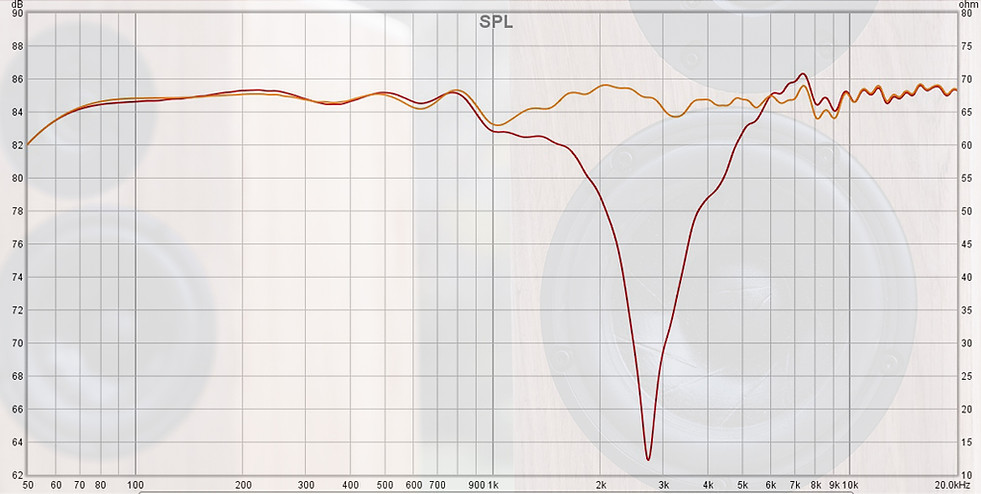TROHET TECHNICAL SPECS.
WHY DO THEY SOUND SO GOOD?
What makes the Trohet's so special is their ability to make the listener feel like they are hearing the recording live. This is the job of any good speaker, but many fail to do so because they simply cannot reproduce a flat-frequency response.
The Trohet design achieves this by providing an incredibly flat frequency response and good acoustic phase tracking. This all happens in the passive crossover that is built inside the speaker.

PASSIVE CROSSOVER.
The crossover is the key ingredient in obtaining a flat frequency response.
The careful selection of capacitors, inductors and resistors creates a network that balances the tweeter with the woofer and also controls driver distortion
An electrical 2nd order filter is placed onto the woofer while 3rd order filter electrical is placed on the tweeter. These two filters pair to provide accurate phase tracking.

LET'S GET NERDY.
REFERENCE FREQUENCY RESPONSE.
The TROHET's have a frequency response of +-1.5 dB between 100-20KHz. This is incredibly flat and provides a balanced sound - everything just sounds the way it should.

THE INVERSE RESPONSE.
This graph shows the response when the tweeter is measured 180° out of phase. The deeper the "null", the better the phase tracking. Phase is an often-overlooked part of speaker design, where many just focus on the frequency response. In my experience, a speaker is only great when both phase and frequency are optimised.
In summary, the TROHET's have great phase tracking at the crossover frequency. This ensures that the music sounds clear and unmuddied.

TROHETS VS THE HIGH END SPEAKER INDUSTRY.
I've designed the TROHET's to compete with speakers costing several times more.
Let's look at an example - The graph to the right provides a comparison with the Speaker X (Circa $16,000Aud/pair).
Red line is the TROHET's and the green is Speaker X.
You can see the frequency response of Speaker X is nowhere near as flat as the
TROHET's in this graph comparison.
It should be said that I'm not dissing Speaker X, they're remarkable speakers and sound very good. They're just out of a lot of people's budget... and you can't have the fun in building them.
Speaker X is a 2-way speaker and uses the same woofer as the TROHET. The brand cannot be named due to legal reasons. But it's one of America's best-known high-end audio companies.

REFERENCE RESPONSE.
The graph below shows the frequency and impedance responses covering the audible bandwidth 20Hz to 20kHz.
It has taken years to finalise the crossover; tinkering to get a tolerance of +-1.5dB was a labour of love. The result is not only seen in the graph but also the sound.
The TROHET's are neutral in sonic signature and provide immense clarity. The speaker can pick up on the minor nuances of music. Vocals are natural, and reverb is extended and carries through even with instruments playing in front. The centre sound stage is present but not overbearing, and stereo width/sound stage is realistic. In short, the TROHET's are designed to make music sound like it should, real and uncoloured.
Impedance Response.
The graph also shows the impedance response, which demonstrates a moderately easy speaker to drive, it may not be suitable for all tube amps, but any solid state will be able to drive these speakers. The key features of the impedance response are detailed below;
-
The ported cabinet tuning frequency is shown to be 39 Hz.
-
The nominal impedance is 9Ω Ohms between 1Hz - 20kHz.
-
Max impedance of 26.85Ω Ohms @ 71 Hz.
-
Min impedance of 5.15Ω Ohms @ 248 Hz.
-
Max electrical phase shift of 32.70° @ 745 Hz.
-
Min electrical phase shit of -51.89° @ 88 Hz.

Freq & impedance response.

Phase & impedance response.

Individual driver responses.

Off axis response, 0° - 60°
